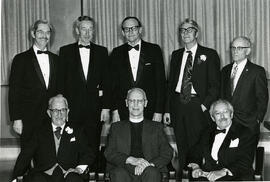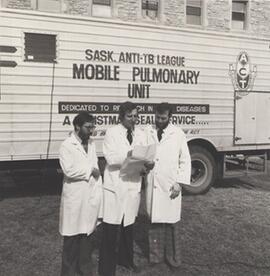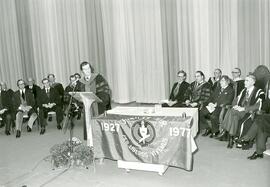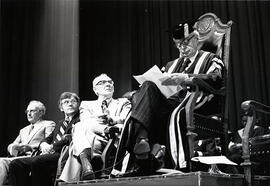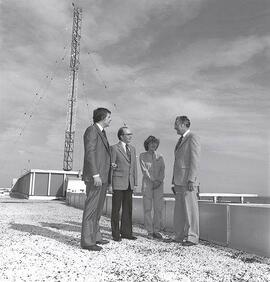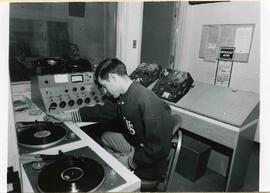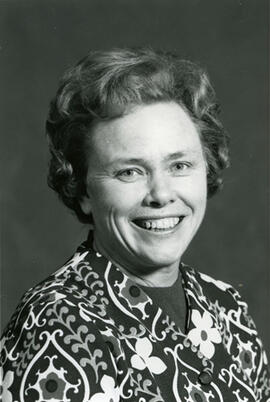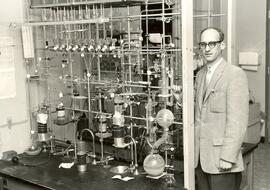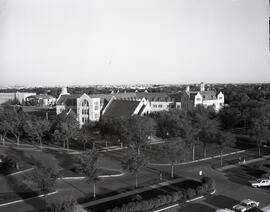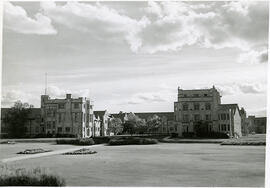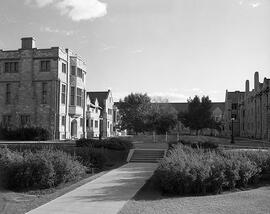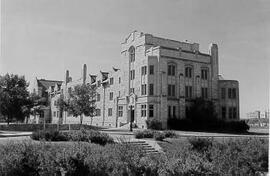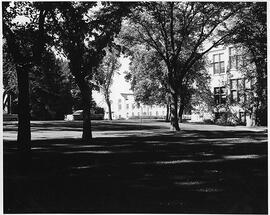Image of CJUS-FM Radio Station official opening of new transmitter. Standing (l to r): Al Pippin, CJUS-FM technical director; Gordon Walburn, station manager; Joanne Bristol, student volunteer; and Cliff Wright, mayor of Saskatoon. Tower in background; taken on top of Arts Building.
Bio/Historical Note: In 1959 a campus group calling themselves "University Radio Productions" approached the federal government for a broadcast license to operate a student-run FM station on a non-commercial basis. Licensing requirements demanded that licenses only be issued to the university itself; in 1960 students approached the Board of Governors for approval. Operation of the station, including a constitution, was formalized in 1965 between the University and the Students Union (USSU), and CJUS-FM was launched. Studios were initially located in the basement of the university's Memorial Union Building, but were moved to the basement of the Education Building in 1980 next to the Department of Audio Visual Services. The station was launched through a partnership between the university's board of governors and its student union. For a number of years, the station also aired some programming from the CBC Stereo network before CBKS was launched. In 1983, with the station in financial trouble, it began to accept limited commercial advertising, and briefly changed its call sign to CHSK. The following year, the university's board decided to discontinue its funding of the station, and CHSK ceased broadcasting on 30 September 1985. CJUS was relaunched as an Internet radio stream in 2005.

